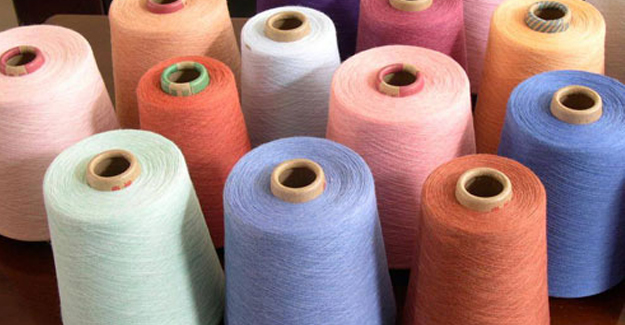Domestic Spun Yarn Production At Five-Year Low
Domestic Spun Yarn Production At Five-Year Low

The fiscal year 2016-17 has not been encouraging for the domestic textile industry. The growth in spun-yarn production, including cotton, blended and man-made spun yarns, has declined to a five-year low in FY2017, keeping the production almost flat as compared to the previous year. Further, the improved competitiveness of PSF as against cotton resulted in a five per cent YoY growth in non-cotton yarn production during the financial year that ended on March 31, 2017, while the cotton yarn production is estimated to have de-grown by two per cent, says the rating agency ICRA.
As per ICRA, the weak trend in cotton yarn production primarily mirrored the decline in cotton yarn export volumes till November 2016, due to lower demand from China amid improved local mill usage. This in turn was caused by better cotton availability in China aided by reserve cotton auctions at relatively favourable prices compared to the past. Although the cotton yarn export volumes improved in December 2016, cotton yarn production remained constrained, due to the demonetisation drive.
“The domestic spinning industry remains highly dependent upon exports, with a third of India’s cotton yarn having been exported during the past five years. Further, high dependence on exports to China and the resulting sensitivity of India’s exports to China’s policy on reserve cotton stock warrant a cautious outlook on India’s yarn exports, until Chinese cotton stock levels subside to historical average,” says Jayanta Roy, senior vice president, and Group Head, ICRA.
With Chinese cotton auctions currently under way, export demand remains contingent on the level of stock liquidated till the conclusion of the auctions in August 2017, and its impact on the mill usage in China. Based on strong response to last year’s auctions as well as the off-take reported during the first two weeks of auctions this year, ICRA expects a sizeable stock liquidation this year as well, which is likely to keep India’s cotton yarn exports under pressure.
“Given the uncertainty prevailing on cotton yarn exports, a sustained recovery in domestic demand remains crucial for the overall spun-yarn demand in the short term,” adds Roy.
In ICRA’s view, as overall yarn demand is expected to remain tepid, spinners may have to sacrifice capacity utilisation or contribution, and hence profitability is likely to remain under pressure. In addition to demand pressures, the spinners continue to face challenges on account of the high cotton prices.
While in the first half of FY2017, cotton prices remained high due to tightened domestic cotton availability, continued cotton-fibre exports amid uncertainty on the actual crop-size against a backdrop of slower cotton arrivals, continue to support cotton prices. During the fourth quarter of FY2017, the domestic cotton prices averaged at Rs. 120 per kg, which is higher by 29 per cent on a YoY basis and 7 per cent higher on a quarter-on- quarter basis.
Meanwhile, the domestic cotton textile industry has urged the government to formulate a comprehensive action plan to eliminate the anomalies that have created distortions in the cotton value chain. As per North India Textile Mills Association (NITMA), despite the fact that over the last decade or so the cotton production has gone up significantly, the domestic cotton economy has failed to serve the industry adequately due to anomalies being created due to absence of a long-term policy. The cotton value chain, often governed by short-term and adhoc policy measures, has grappled with wild fluctuations in supply as also irrational price movements. This has severely impacted the cotton textile base of the country.
Pointing out some of these concerns, NITMA says that the domestic cotton economy has failed to maintain the desired level of surplus, even as the crops have been much more than the domestic demand. And this has often lent volatility to supply and prices. The textile association has emphasized the need to have at least one and half months cotton stock i.e. around 40 lakh bales within the country. It says that the 2016-17 cotton balance sheet is very precariously placed as sowing is 10-15 per cent less with a low opening stock of around 43 lakh bales.



 textileexcellence
textileexcellence 







